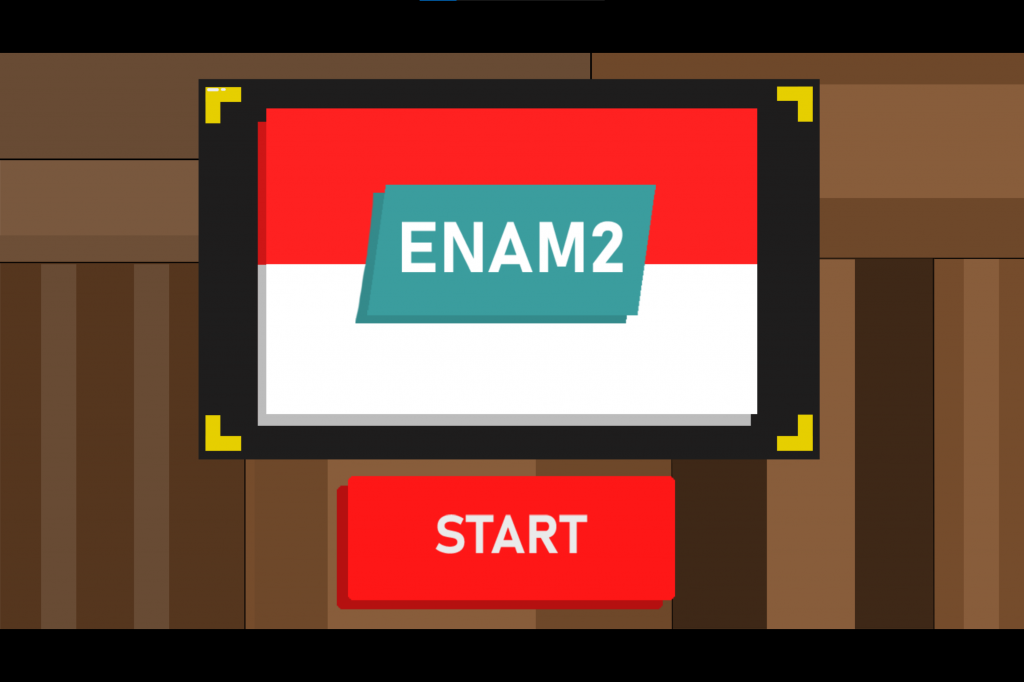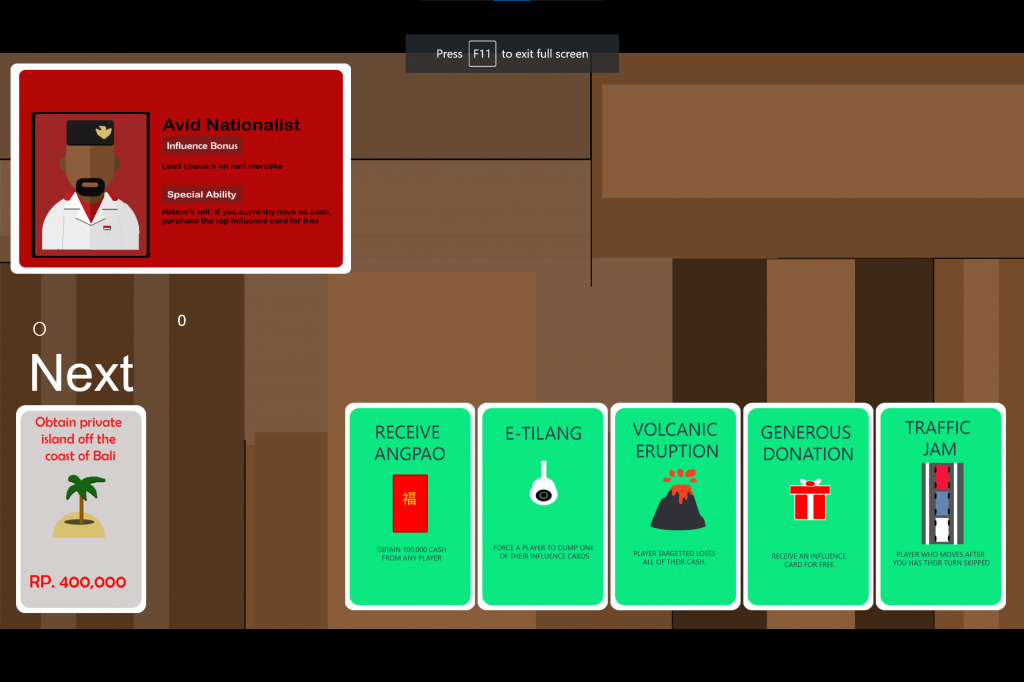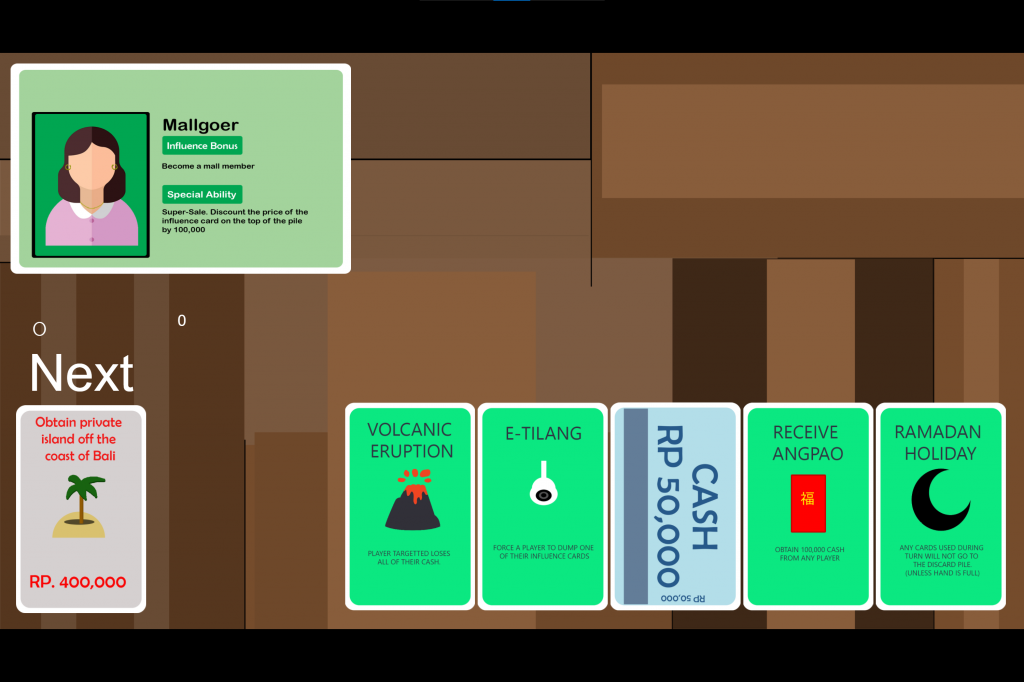When development for the game began, the workload was split in two ways, I was given time to finish the designs for the games. As someone who isn’t very good at digital art, it took a lot of effort for myself to print out these designs and it was a good test for my creativity. I enjoyed making the concept for each card and thought hard about how each one fit into the game. However, we ran into many problems later into development regarding conflicts within Construct 2 that set back a lot of the original vision for the game. Many of the cards’ unique quirks and abilities had to be toned down a severe notch due to the limitations within Construct 2. Since I was not the one in charge of most if not all the coding within the game, I am not able to give a good perspective on the issues within Construct 2. However, after testing the code and understanding the inner workings, even I was able to see that the problems being shown were not reasonable and showed no valid pattern, the code was then run over and over and rewritten for better results but we never really reached the final product we had envisioned in the first place. We had a fun game in mind that fit well with the theme provided and I had fun making it but at the end of the day I’m still quite disappointed that all of the effort we made was stumped. I understand that we have worked to the best of our abilities at the moment and that we have to work harder next time too.
Guide to our Game
The name of our game is Enam2 and our group’s team consists of 2 members, Vincentius Gabriel Tandra and Ravel Tanjaya.
Below are 3 screenshots of our game, the first screenshot is the start menu of our game and the other two are during a player’s turn whilst playing the game.
Our game is a turn-based card game where the player who obtains the most influence at the end of the game is the winner. This is done by sabotaging other players using action cards and buying the influence using cash obtained. When the game starts, players are each given their own character card. Each character card has their own unique ability which can be used when playing the game. After that, they receive 5 cards which are either action cards or cash. During a player’s turn, players are able to do certain actions. These actions include, using their character’s special ability, using cash to store it, buying influence and using action cards. A player may also skip their turn if they are unwilling to play anything.
Another one of our game’s main features is that it is also available on mobile devices. This is why the layout of the game is designed in this way, for it to be compatible on both devices. We made it as a pass and play game so one person can own the game and play it with a group of friends just like a real board game.
As for player controls, all of the game is controlled by touch, due to the concept of a card game, no actual movement is being simulated here so we decided against using any keyboard controls.
Each team member’s contribution is as follows. Vincent was in charge of the design of the game ranging from textures to the overall idea for gameplay and balancing. Ravel was in charge of all of the hard coding, debugging and testing the game. We both came up with the idea for the game together and decided it would be an interesting project to make a card game fully themed with Indonesian culture.
All of the textures within our game were created using assets within programs such as Photoshop, these are as follows; the background, menu, cash, influence cards, action cards and character cards. Some assets such as the characters were inspired by a template from online and then adapted to fit the style of our game. There are about 36 cards in total.



